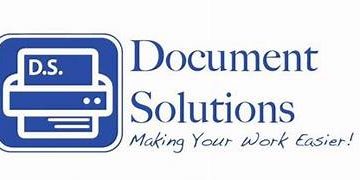Navigating the intricacies of tax regulations can be a daunting task for any business owner. Particularly in Texas, understanding and complying with the sales and use tax requirements plays a crucial role in the smooth operation of your business. This detailed guide is designed to demystify the process of obtaining a sales and use tax texas Permit, ensuring that you stay on the right side of tax compliance.
Introduction to Sales and Use Tax in Texas
Sales and use tax in Texas represents a vital revenue stream that funds essential public services within the state. Essentially, sales tax is imposed on all retail sales, leases, and rentals of most goods, as well as taxable services. Use tax, on the other hand, is due on all goods purchased out of state but used within Texas, for which no tax was collected at the time of purchase.
Benefits of Obtaining a Texas Sales and Use Tax Permit
- Compliance with Texas tax laws, avoiding penalties and fines.
- Legitimization of your business operations within the state.
- Ability to recover sales tax paid on purchases for resale.
Understanding the Need for a Sales and Use Tax Permit
If you’re operating a business in Texas or selling goods and services to Texas residents, it’s likely you’ll need to collect sales tax. To do this legally, a sales and use tax texas Permit is required. This permit is your authorization to collect tax on behalf of the state, ensuring that the collected taxes are remitted appropriately.
Who Should Apply for a Texas Sales and Use Tax Permit?
- Retail and online businesses selling tangible goods in Texas
- Service providers conducting taxable services in the state
- Businesses outside Texas who have nexus in Texas
Step-by-Step Guide to Completing the Texas Sales and Use Tax Permit
- Determine If You Need a Permit: Assess whether your business activities fall under the taxable bracket.
- Gather Necessary Information: Prepare your business details, including EIN, business location, and ownership information.
- Access the Texas Comptroller’s Website: Navigate to the Texas Comptroller’s official website and find the eSystems menu.
- Complete the Application Form: Fill out the application for the sales and use tax texas Permit, entering your business details accurately.
- Submit and Await Approval: After submission, you’ll receive a confirmation and, eventually, your permit.
Common Mistakes to Avoid During the Application Process
- Entering incorrect business information
- Failing to estimate monthly sales tax accurately
- Overlooking the necessity of separate permits for multiple locations
Tips for Maintaining Compliance After Obtaining the Permit
- Keep accurate records of all taxable sales and the tax collected.
- Ensure timely filing and payment of collected taxes to the Texas Comptroller.
- Stay informed about tax rates, changes in regulations, and reporting deadlines.
Peisner Johnson & Company: A Partner in Compliance
For businesses looking for expert guidance in navigating Texas sales and use tax compliance, Peisner Johnson & Company offers unparalleled expertise. Specializing in state and local taxes, they can provide comprehensive assistance, from permit application to ongoing compliance and audit defense.
Conclusion
Securing a Texas Sales and Use Tax Permit is an essential step for any business operating within the state. By following the step-by-step guide provided, avoiding common pitfalls, and leveraging the assistance of tax professionals like those at Peisner Johnson & Company, you can ensure compliance and focus on growing your business without the looming concern of tax issues.
Navigating sales and use tax doesn’t have to be a taxing endeavor. With the right preparation and resources, you can seamlessly integrate this aspect of your business operations, ensuring a successful and compliant future in the Lone Star State.




